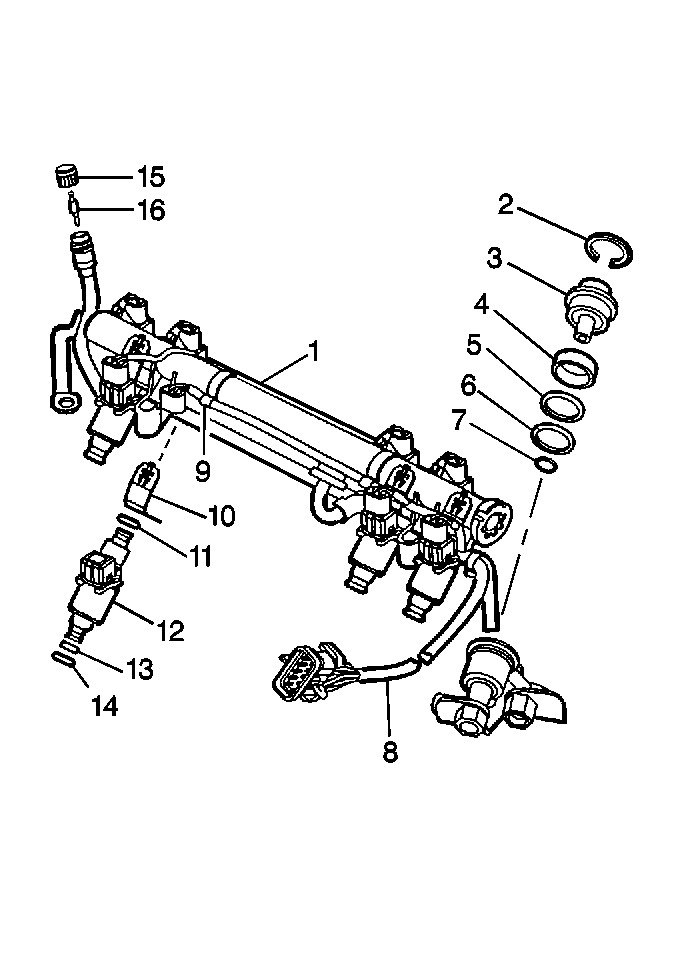The fuel pressure regulator is
a diaphragm-operated cartridge relief valve with the fuel pump pressure on
one side and the regulator spring pressure and intake manifold vacuum on the
other. A retainer holds the fuel pressure regulator.
The regulator's function is to maintain a constant pressure differential
across the injectors at all times. The pressure regulator compensates for
engine load by increasing the fuel pressure as engine vacuum drops.
With the ignition ON leaving the engine off (zero vacuum), the fuel
pressure at the pressure test connection should be 379-427 kPa
(55-62 psi). If the pressure is too low, poor performance could
result. If the pressure is too high, excessive odor may result. The Fuel System
Diagnosis has information on diagnosing fuel pressure conditions. Refer to
Fuel System Diagnosis
.

